Metal 3D printing with Markforged
3D printed metal parts overnight!
From visiting over 4000 manufacturing sites and working with manufacturing CEO’s over the last 15 years, one thing is clear Manufacturers that embrace new technology and process improvement continue to succeed.
Big Brand Manufacturers such as Porsche and Siemens are investing in Markforged and making a competitive move in the Era of Industry 4.0. These and other manufacturers that are leveraging Additive Manufacturing, Robotics, IoT and Automation are able to better meet customer demands of highly customized products.
“The customer can have it painted in any color they want, so long as it’s black” / Henry Ford
Back in 1910 this was necessary in order to scale production for Henry Ford’s customers. Over 100 years later this could not be further from the truth; Today’s business customers demand products that fit their business requirements while consumers want something more, something unique and tailored just for them. The market, crowded by makers, hackers, DIY’ers and individualists, are all begging for customization, for a return of craftsmanship on a massive, industrial scale. The world, it seems, wants something impossible: mass customization – all the charm of artisanal production with all the advantages of mass production. In 2018 the reinvention of manufacturing is “customized mass production”. While 3D Printing (3DP) has been focused on low-volume cosmetic prototypes, Additive Manufacturing (AM) technology is now adopting parallelization of printers and mass production. Leading companies are embracing AM on an industrial scale for high-volume manufacturing.
It might still sound like something out of Star Trek, but AM technology with a push of a button isn’t just the way of the future; it’s happening right now at manufacturing companies around the world. We now have the ability to print strong parts on the same day and produce it less expensively than traditional metal manufacturing; On premise and safely, 50% lighter than cast iron. With revolutionary new Metal 3DP technology, manufacturing companies experience new ways to produce products at lightning speed. As a result AM is forever changing how we design and make products.
“Organizations can now reduce production costs associated with creating metal parts by up to 98%”
With new technologies and lower barriers to entry for industrial 3DP, the industry is expected to grow at 20% YoY, to become a $20 Billion industry by 2020 according to Wohlers 2017 report, potentially disrupting the traditional manufacturing industry which last year was a $10 trillion industry.
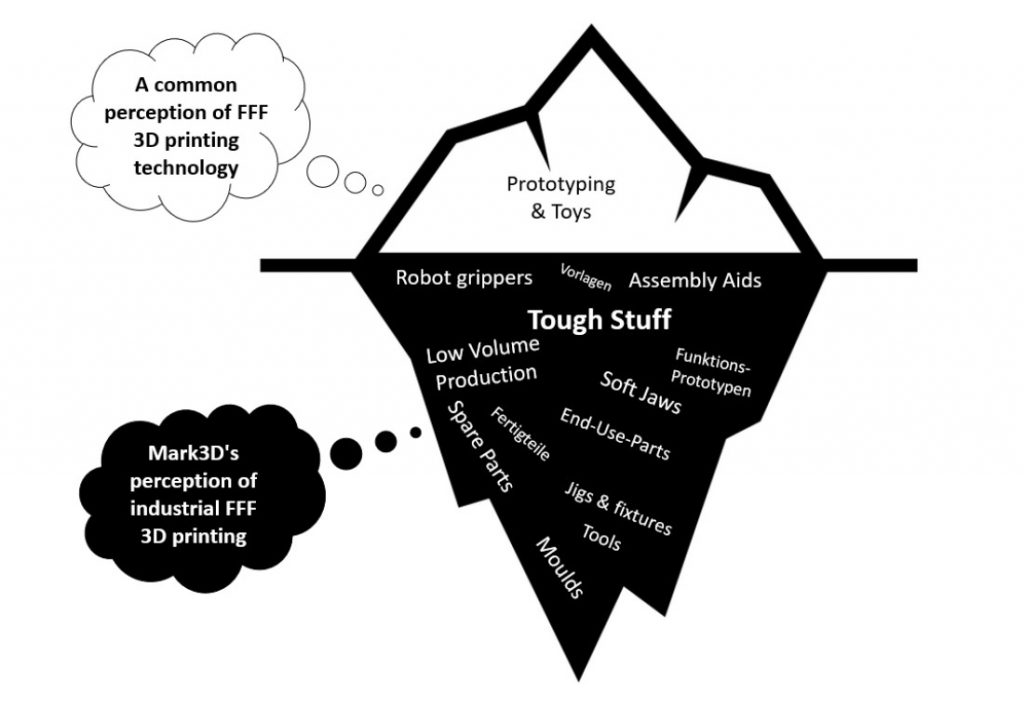
There are some clear benefits with Metal 3DP such as; faster to market, light-weighting and the ability to personalize products or make parts that are impossible to manufacture using traditional methods. This has historically been driven by Aerospace and Automotive due to the high cost of Metal 3D printers. Yesterday’s Metal 3D printers are the mainframe computers of manufacturing. They are large, slow, and expensive ($500k -1M USD). This is where metal powders are laid on a powder bed and then fused using a high-powered laser or electron beam. These metal powders used in Metal 3DP are extremely volatile, so they must be handled in a special vacuum chamber. In addition, handling the powders is also extremely dangerous, so a highly skilled operator is required. This explains the low adoption rate among manufacturers. In the same way mainframes were disrupted by cloud data centers, large-format metal printers will be replaced by smaller, low cost machines working in parallel – print-farms. The industry, needs something that is 10x lower cost, 10x safer and 10x easier to use.
If you’ve previously done the math and decided that metal 3DP wasn’t practical, it may be time to take a second look.
The industry-leading technology of the Markforged Metal X is creating remarkable opportunities for engineers, designers & manufacturers around the world by enabling them to produce Metal 3D printed parts in-house the same day for a fraction of the cost of traditional Metal 3DP. 10x less expensive than alternative metal additive manufacturing technologies – and up to a 100x less than traditional fabrication technologies like machining or casting. Dramatically reducing cost while enabling innovation.
COST SAVINGS POTENTIAL
Organizations can significantly reduce production costs associated with creating specialized production-ready metal parts with the new technology. It is by far the most cost-effective solution to metal 3DP. A range of printing materials allows designers, engineers, and manufactures to design and print strong 3D metal parts overnight whether they need to be extra strong or weld-able. With a starting price of $99K USD the overall cost savings cannot be ignored.
„It’s now possible to go from CAD model to 3D printed metal part overnight“
THE PROCESS
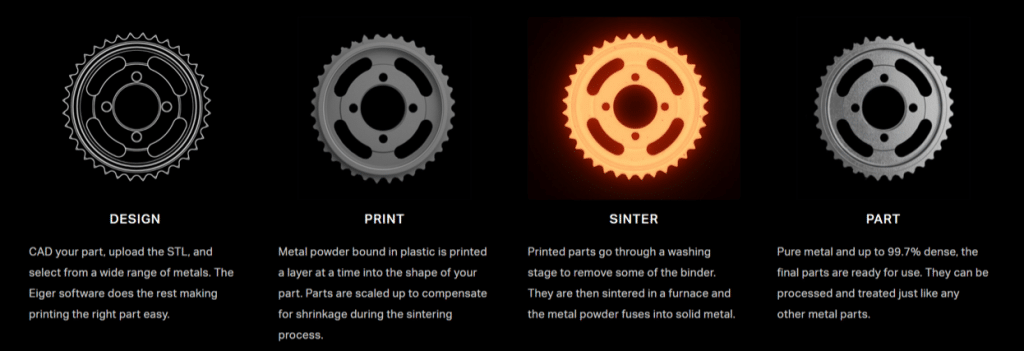
Atomic Diffusion Additive Manufacturing (ADAM) process for printing metal unlocks a new era of metal parts production. Revolutionary ADAM technology makes it safer and easier to print metal parts compared to previous metal 3DP methods. ADAM is an end-to-end process that starts with metal powder, captures it in a plastic binder, which makes it nonflammable, safe to breathe and easy to handle. The part creation process builds on existing carbon fiber reinforced extrusion technology – where micro strands of carbon fiber are bound in plastic. It then forms it into the part shape one layer at a time. After printing you sinter the part in a furnace, burning off the binder and solidifying the powder into the final fully-dense metal part.
Thermally sintering parts is well-established in the Metal Injection Molding (MIM) industry to create end-use parts for medical, aerospace, and consumer applications. The sintering step take place in a furnace and fuses the metal power into 99.7% dense metal while removing all final traces of the binder. ADAM leverages well known MIM materials that are used in demanding, end-use applications. Best of all, the process supports hundreds of metals including:
By optimizing the hardware, software and materials together – a new bar is set for incredible surface finish. This is important because highly repeatable extrusion (which is visible as great surface finish) is the key to dimensional accuracy and pasts that fit perfectly in application. The end result is a perfectly-sized pure metal 3D printed part.

Organic honeycomb internal structures allow you to achieve strength with the minimum amount of material.
ADAM technology provides several unique benefits to manufacturers. First, designers can create fully enclosed structures. With previous 3D metal printing, an exit hole had to be incorporated into the design so the metal powder would have a place to exit the part to ensure nothing was trapped inside. Since the binder simply burns away with ADAM technology, parts can be completely enclosed. Second, because manufacturers can create these closed designs, they can utilize complex internal structures to create strong parts that are light and cost less to manufacture. Third, the incredibly low price point combined with the high resolution and quality of the final parts allows for many more use cases than have been previously practical.
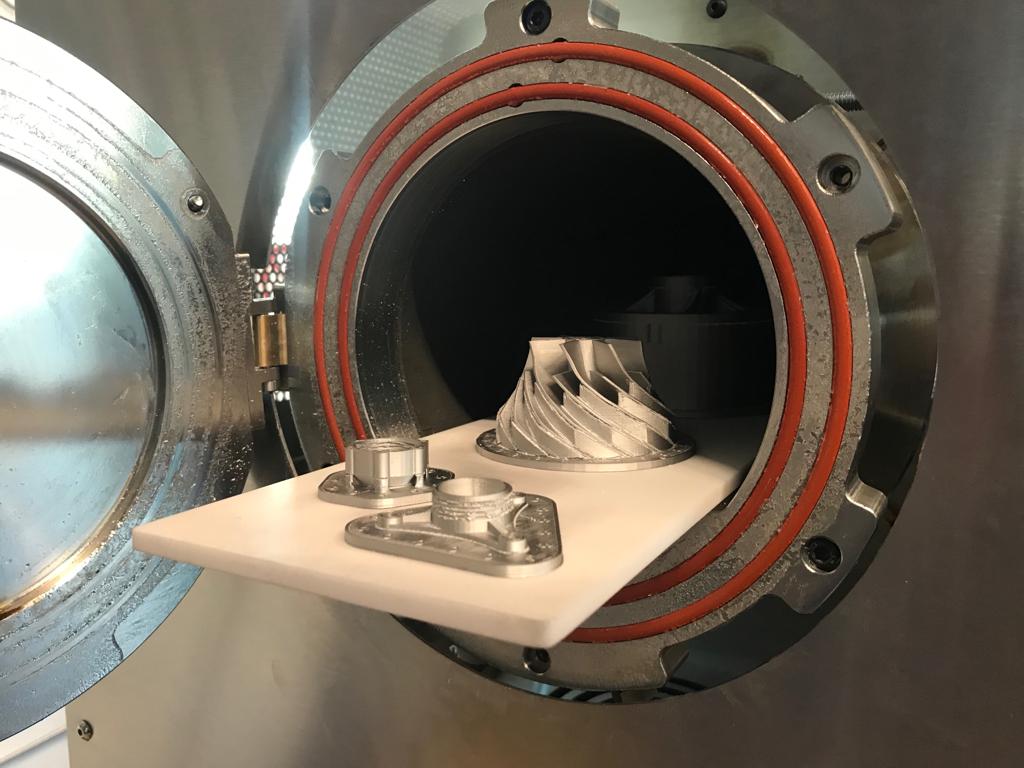
Stanley Black & Decker
Engineers from Stanley Black & Decker were searching for a cost-effective way to manufacture low volume, complex parts. After exploring metal 3D printing technologies, Stanley Black & Decker’s Infrastructure Innovation Center chose Markforged’s Metal X additive manufacturing technology to produce reliable, 3D printed parts and slash their capital costs and lead times.
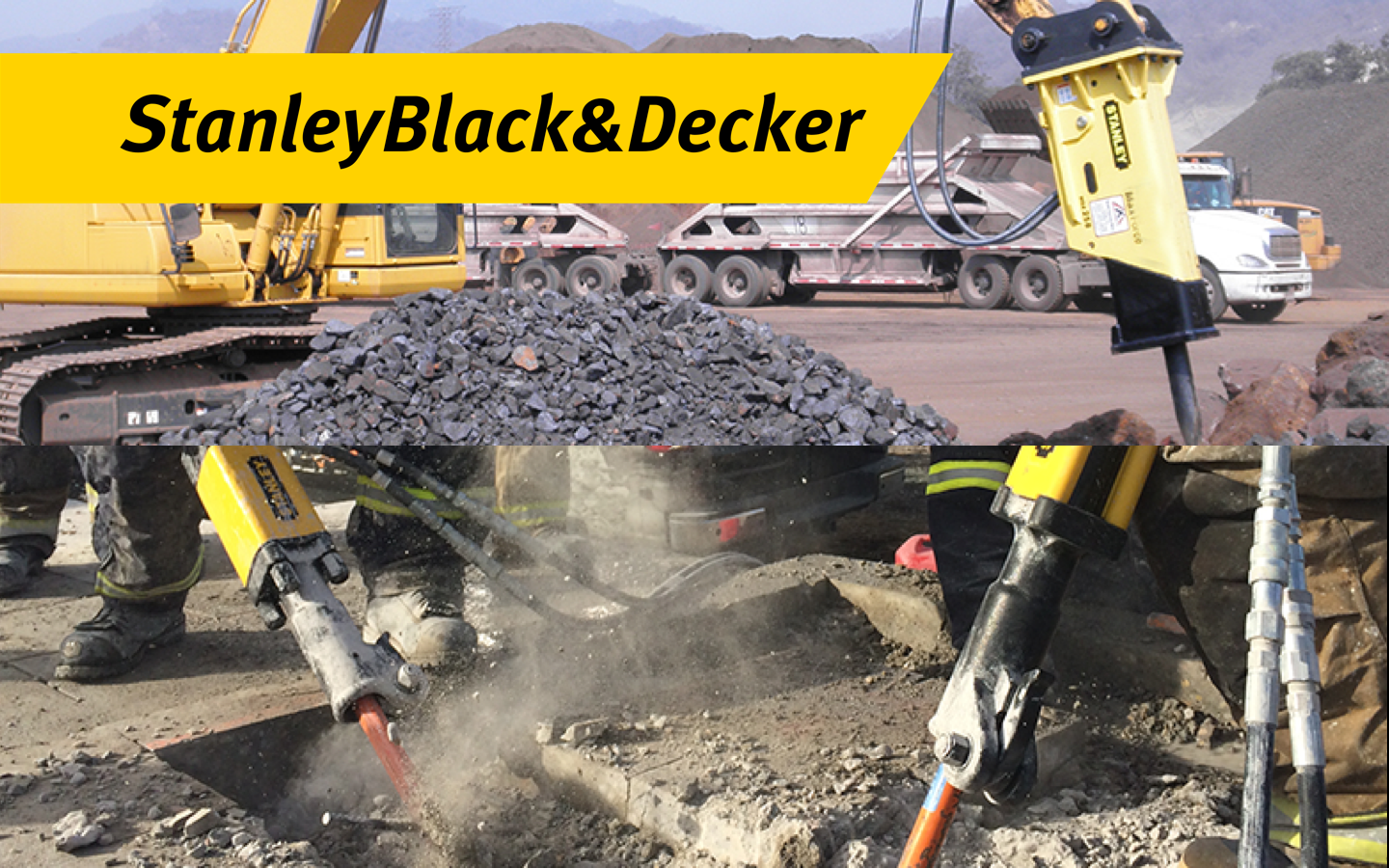
By leveraging Markforged’s Metal X additive manufacturing technology, the Infrastructure team expects to slash capital costs on two different parts – an actuator housing for the PD45 Hydraulic Post Driver and a wheel shaft for the PG10 Profile “Frog” Grinder. Engineers at Stanley Infrastructure rigorously tested the performance, durability, and life cycle of each of the two parts and approved them for use as production parts for a fraction of the cost.
By replacing their current manufacturing work flow with the Markforged Metal X, Stanley Infrastructure saves between 34% and 48% on manufacturing costs and slashes part lead time by 69%. While these are significant savings, they even better leverage the Metal X on single part manufacturing (in this case, Stanley Infrastructure often produces single replacement parts for devices in the field).
Because their existing process only produces parts in batches, printing single parts with the Metal X is 12.5x cheaper and 20x faster than casting and machining. The Metal X further undercuts this process by being a pay-per-part machine instead of a pay-per-batch machine.
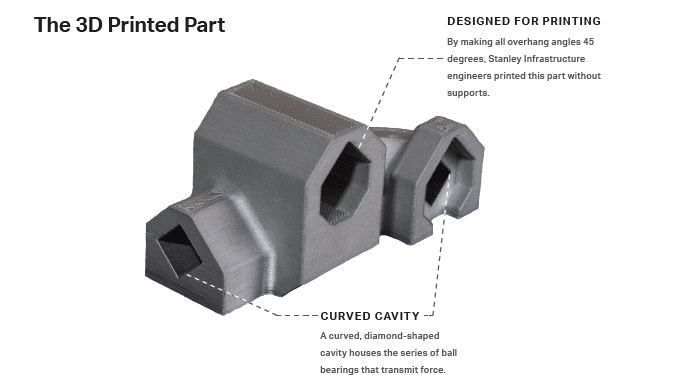
Reduced Complexity
The original actuator housing consisted of four parts – a cast and machined main housing, lasercut cover plate, and two bolts to fasten the housing assembly together. Stanley Infrastructure engineers worked with Markforged to redesign the part for printing on the Metal X. Instead of a four part assembly, the redesigned part prints in one piece without support material, saving manufacturing and engineering time.

According to a Stanley Infrastructure engineer, they believe that they can save thousands of dollars per year on this part alone, while replicating the part quality and reliability that they expect from machined parts. The detailed succes story of Stanley Black & Decker can be found here.
LARGE SCALE PRODUCTION – PRINT FARMS
“What really matters is being able to scale up production volume as quickly as possible.” / Elon Musk
It’s now as simple as picking a part, choosing your material, and pressing print, across a fleet of printers, in an organization of users. From anywhere.. To anywhere in the world.. Metal 3D print-farms will shorten development time, closing the gap between prototyping and production. Leveraging a cloud-based fleet management solution. There are thousands of printers churning out parts all over the world – all running with full telemetry, error monitoring, feedback, and analytics. Think of it like a distributed print farm. At Markforged in Boston, there is over 100 printers running in parallel. Half are dedicated to producing parts for developing new printers. 30 run long-term cycle testing, and 20 are used in operations to manufacture sample parts – about 11,000 parts per month.
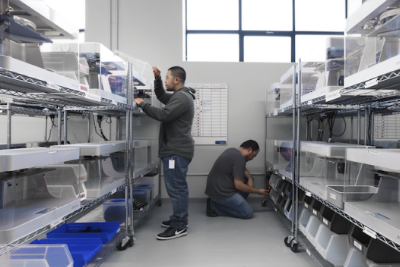
Here’s the beauty; If you want prototypes – use one printer, for production – use 100. That’s because the 3DP technology behind ADAM fundamentally scales down in cost. You start with a known high volume process (MIM) and print instead of injection molding, and then you parallelize it – multiple printers controlled through fleet management software. A full stack production furnace runs and is designed to keep up with an injection mold – so it can handle the part output of a 500-1000 unit print-farm.
Closing
Humans have been pouring metal into molds for five thousand years. Now we have a better way. The digital age transformed every other industry known to man – music, photography, writing, telecom, email, the internet. But manufacturing is largely the same as it was in the 50’s. It’s time for mechanical engineering to enter the digital age.
Have you asked yourself whether your company might benefit from AM? Should Metal 3DP be a part of your innovation strategy? Would a 65% weight reduction of products impact your bottom line? With the base model of the Metal X available at $99K USD, the Metal X may be the Metal 3D printer you’ve been waiting for. But don’t just take my word for it, request your free Markforged sample parts here.
Request a demo!
Feel the strength of continuous fiber for yourself.

About the Author: Operating as APAC Channel Sales Manager for Markforged with over 15 years hands-on experience of sales leadership and business management, Richard Elving has a wealth of knowledge from the manufacturing industry, visiting over 4000 manufacturing sites across Northern Europe & APAC working for organisations such as Autodesk, Dassault Systemes and SolidWorks, where he was recognized for exceptional sales achievements.
Original post: https://www.linkedin.com/pulse/how-affordable-metal-3d-printing-changing-way-we-make-richard/
Learn more about applications with metal 3D printing!
For which applications is the Metal X suitable? How do I design correctly for metal 3D printing? What do users say and where can I find more information? – This is the right place for you! We listed some information leading you directly to the matching answers.

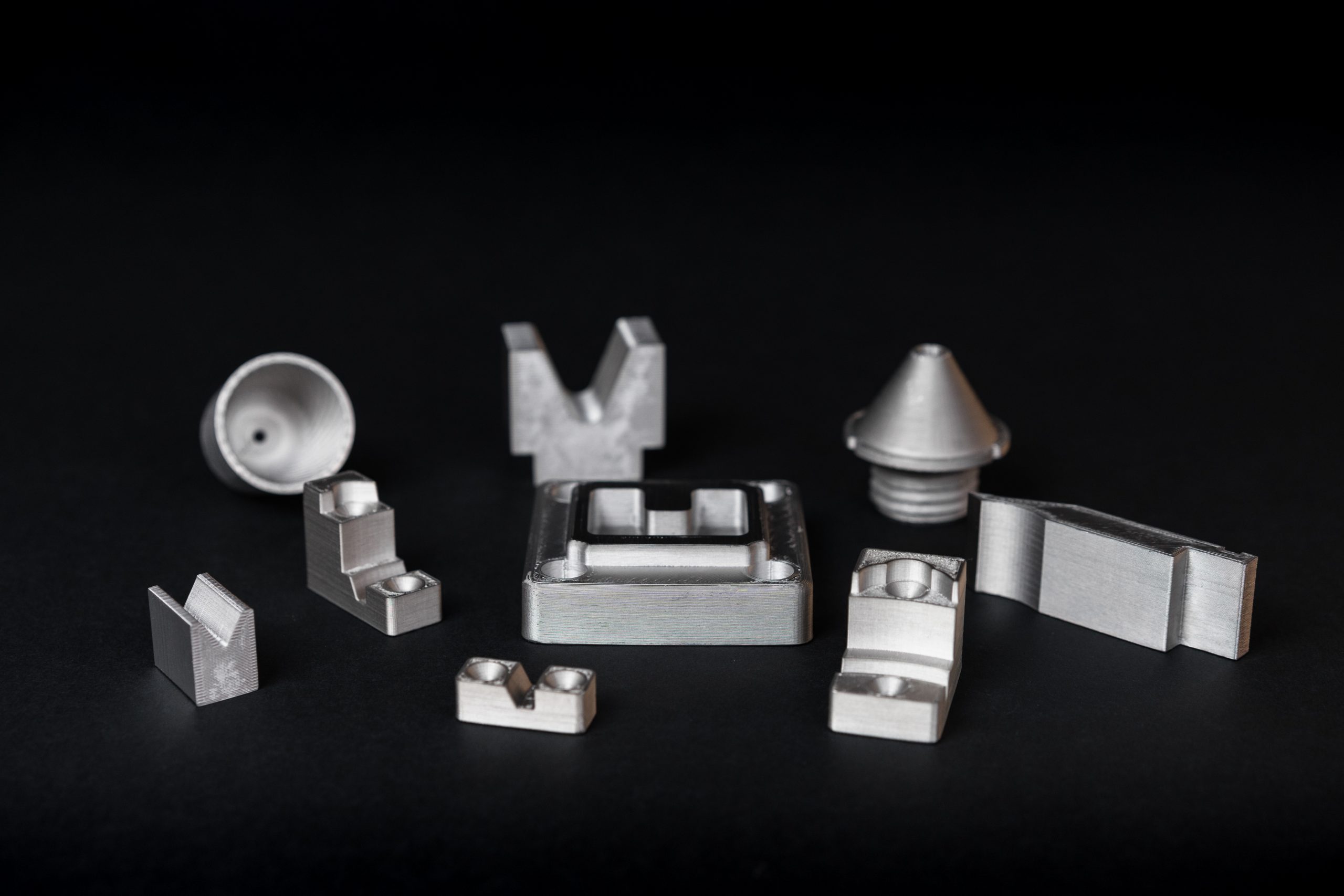
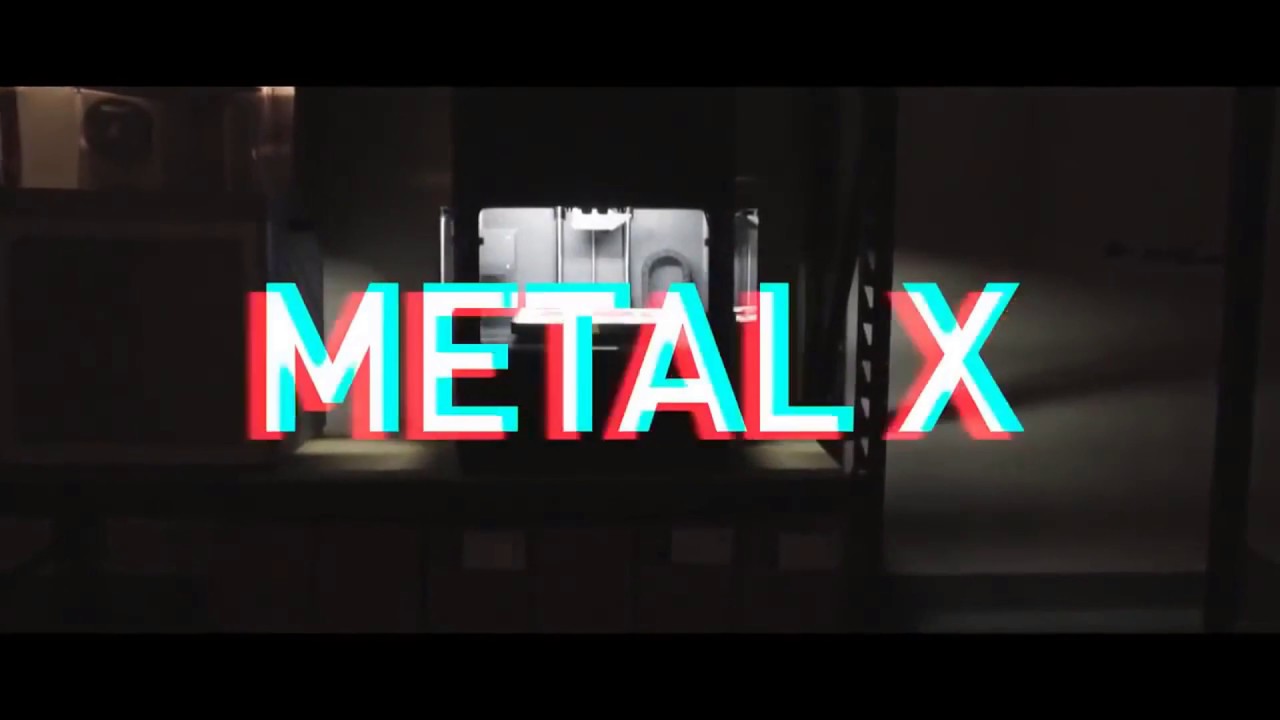
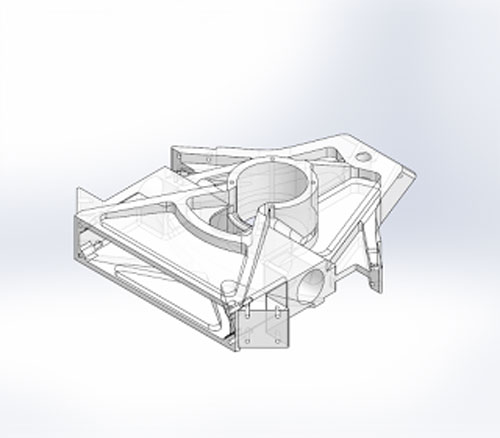
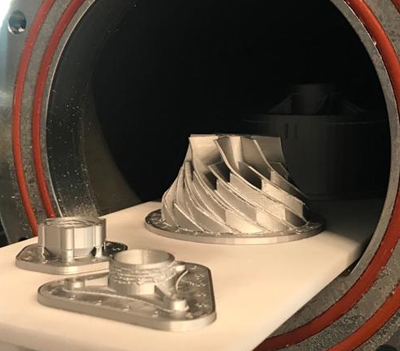
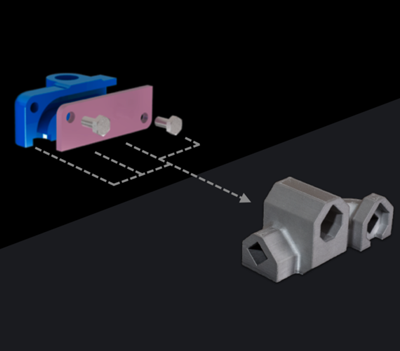


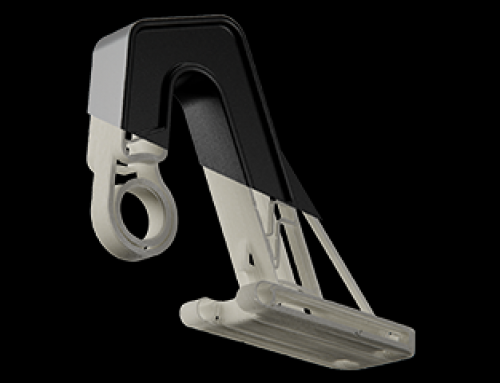
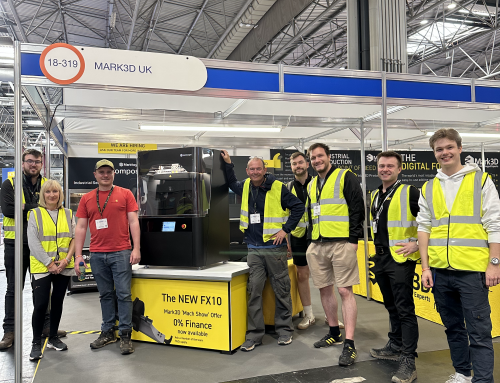
Leave A Comment